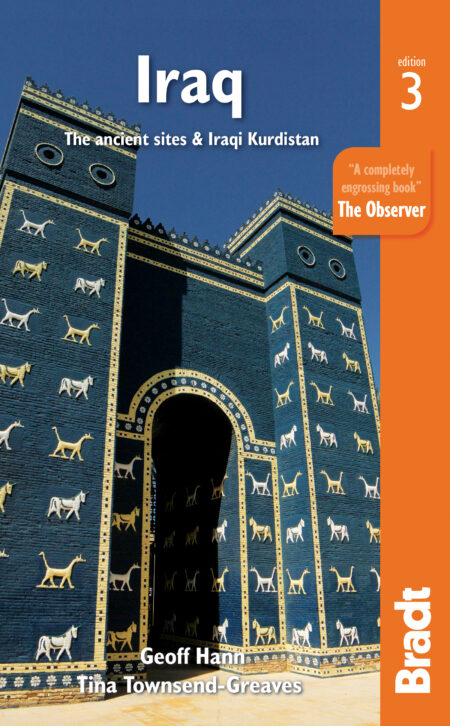Iraq’s magnificent, ancient structures have acted as a magnet for visitors to the country throughout the centuries. It is a land where clay tablets, cylinder seals, painted murals, ziggurats and ruins of temples and palaces shed light on life in ancient times. From the imposing city of Babylon to Erbil’s magnificent citadel, these are the best archaeological sites in Iraq.
Inspired by the romance of these ancient places, travellers, archaeologists and historians alike have flocked to Iraq in the hope of being transported back in time by the remnants of a bygone era. To visit sites like Tel Ubaid and Eridu, most probably sited on the ancient line of the now-receded Gulf, and to see on the ground small sherds of Tel Ubaid pottery with its distinctive greenish colour and painted black stripes is to be catapulted back 6,000 years. For more information, see our guide to Iraq.
Babylon
‘Babylon the great, Mother of Harlots and the abominations of the earth’, so it sayeth in the Book of Revelation in the Bible. The Babylon that has left its imprint on the history of the world is the Babylon from the time of Nebuchadnezzar II onwards – two centuries of glory and decadence when the arts and sciences flourished and when there was an unprecedented boom of prosperity.
The centre of the ancient city is an appropriate place to begin a tour of the site and get a sense of what life would have been like all those years ago. Walk along the famous Processional Way, marvel at the rebuilt Palace of Nebuchadnezzar II, King of Babylon and take in the jumbled mass of brickwork at the Summer Palace, rumoured to be the site of the fabled Hanging Gardens.
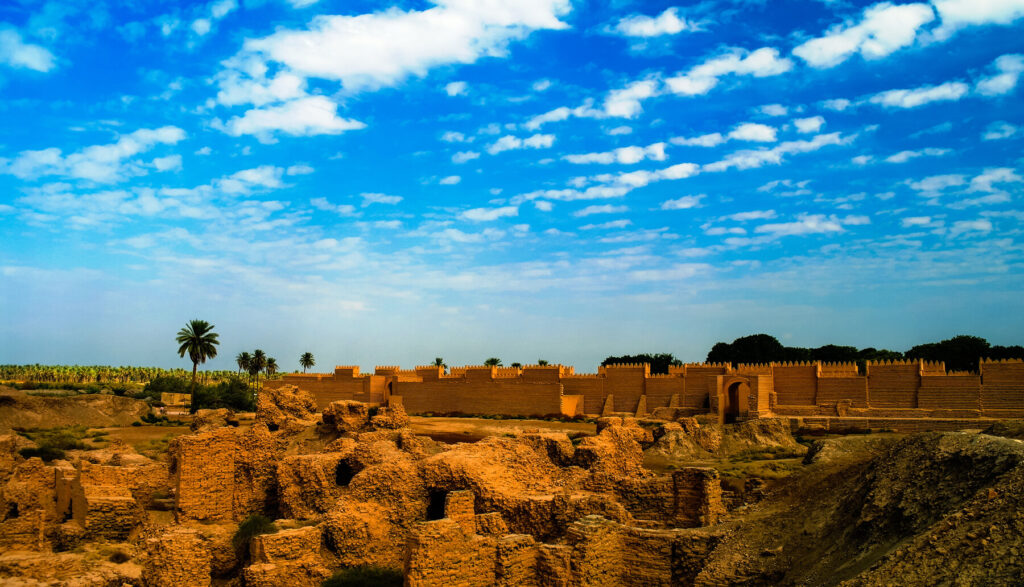
Returning to the ancient past, sitting isolated on flat ground is one of the most iconic symbols of Iraq: the Lion of Babylon. Sculptured from basalt, the lion is depicted astride a captive. Marks on the lion’s back indicate that originally it was fitted with a saddle. This massive, almost Modernist-appearing piece of art has many theories about it. Certainly there is no basalt stone for many hundreds of miles. Could it be a trophy of war taken from the Hittites of central Anatolia?
Author tip: To get the very best from the site, read, read and read. There are so many books and so much internet material available about the past and present history of Babylon that will only serve to enrich your visit.
Ur
Together with Babylon, Ur is probably the best-known city of Mesopotamia. Known locally as ‘Tel Muqeihar’ or ‘mound of bitumen’, Ur’s name is taken from the 18m-high ruins of the ziggurat, which dominated the otherwise-desolate site.
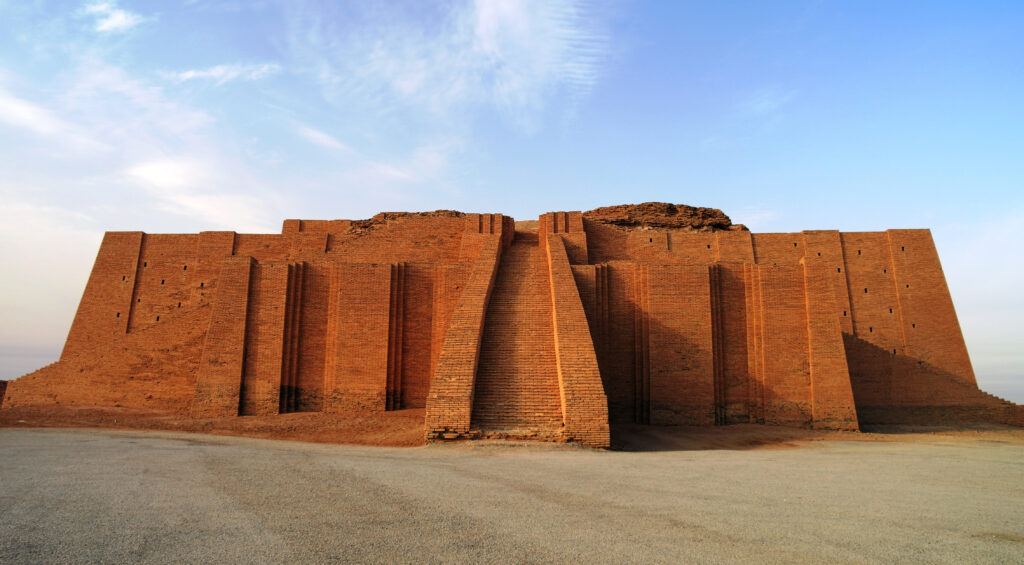
The visible remains of the ziggurat are of two widely different periods, an early structure built by Ur-Nammu in about 2300BC having been enlarged and rebuilt by Nabonidus. Although it is not currently possible to climb the ziggurat, from the top it is possible to clearly see the harbour depressions, the various temples and the palace foundations.
The third-Dynasty mausoleum contains the Royal Tombs which form the eastern limit of the great cemetery. The graves vary in date from the beginning of the Early Dynastic to the end of the Akkadian period, and were consequently superimposed and often inter-penetrating. The majority have disappeared in the process of excavating, but some of the vaulted tombs in which important people were buried still remain.
Close by the tombs you can see the ‘Pit’ or ‘Woolley’s Pit’. This 35m-deep excavation was an attempt by British archaeologist Sir Leonard Woolley to plumb to the ground levels of the site, and Woolley subsequently cabled a telegram to London newspapers to say that he had found evidence of a biblical flood in the pit. Behind the Royal Tombs are some large spoil heaps and the foundations of many ancient houses, a few of which have been reconstructed. It is claimed that this is the place where Abraham lived with his family. Plans are still current for some minor archaeological work, but mostly the site is being planned as an important tourist and visitor centre.
Erbil
Modern Erbil (meaning ‘seat of the Gods’ in Kurdish) is today the home of approximately 900,000 people and is one of the fastest-growing cities in the Middle East. Despite this, it is also the location of one of Iraq’s most impressive archaeological attractions.
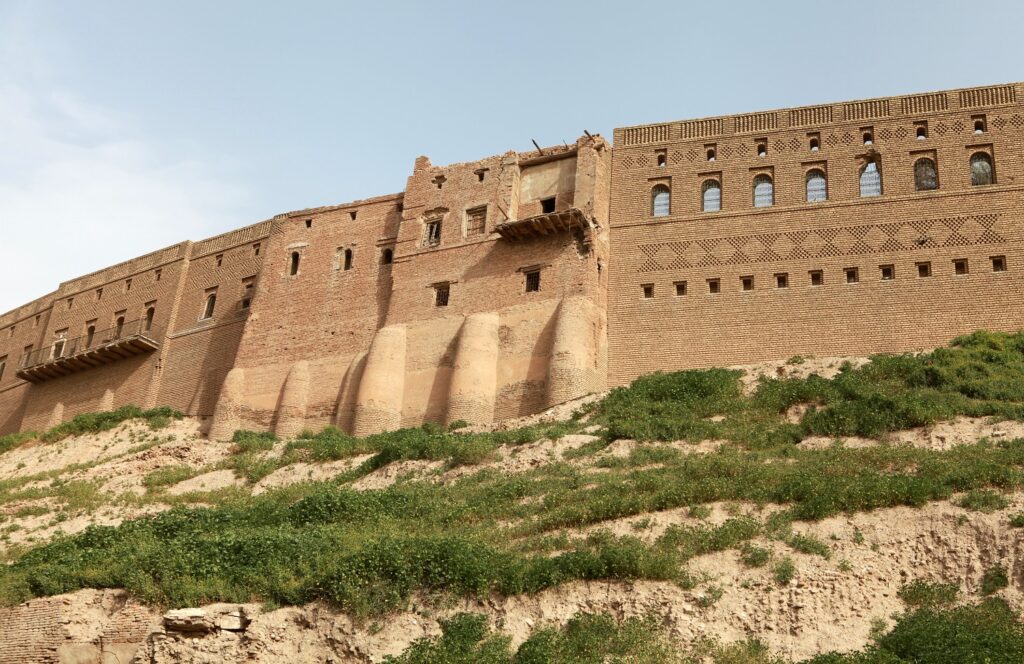
The ancient citadel, recognised as a historic site by UNESCO, is being renovated and, for the first time in its history, is uninhabited. Located in the centre of the old city, this vast citadel covers an area of 102,000m². It is a round construction built upon a 26m-high tel, a historic mound of many layers of historical settlements dating from ancient times. The first village was established here around the 6th millennium BC and has been continually inhabited ever since.
Until 2006, the interior of the citadel contained more than 600 houses and the area was abuzz with daily life. Today, with restoration work by the Kurdistan Regional Government (KRG) in co-operation with UNESCO going on, an eerie silence reins. The main gate overlooking the town, which was rebuilt by Saddam Hussein, has been removed and a fresh gate, more in keeping with the original one, built in its place. The walls of the citadel are slowly being repaired and its inner historical houses are being reconstructed and refurbished under the auspices of the UN and converted into various smaller museums.
Eridu
According to Mesopotamian tradition, the Sumerian city of Eridu ranks as ‘the oldest city in the world’. Interestingly Eridu is explicitly described by ancient writers as ‘standing upon the shores of the sea’ and Ur, situated only a few miles away, ‘had quays at which ocean-going vessels discharged their cargoes’. Both of these cities today are almost 160km from the shoreline.
Eridu’s ziggurat stands on a great rectangular terrace 200m by 120m, covering older remains. It consists of a core of unbaked bricks covered in baked bricks stamped with the name of Ur-Nammu. The ziggurat stands on a platform of 15m². A triple staircase, the centre stairs of which were covered in stone slabs, led to the upper level. A total of 16 temples have been discovered to the south of the tower in different levels of excavation. An extensive cemetery dating back to the Ubaid period has also been excavated.
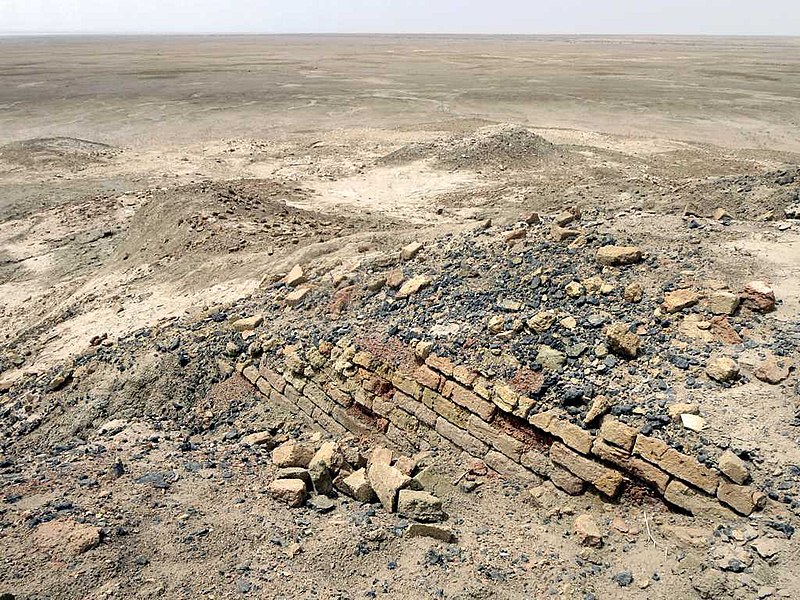
When you reach this desolate, windy city mound, which is strewn with Ubaid and later-period pottery and even early sickles, you will feel amazed as to how anyone could have lived and settled here. Today even the local tribespeople have moved away. But in the past the sea, rivers and marshes abounded here as you can see from the masses of sea shells on the site. Here is silence with only the wind for company; you can feel it is not only the end of a world but it could also be the beginning of our civilisation, the oldest city in the world.
Hatra
City of the Sun, Hatra was the first, and for a very long time, the only UNESCO-listed site in Iraq. It is the only large ancient city in the ‘round’ in Iraq. The massive, circular city walls and towers and its inner masonry buildings are a great contrast to the mud-brick sites in the rest of Iraq.
A thousand metres in is the city entrance, through the outer walls and then through the inner-city wall. It thrills the eyes to see such masonry in Iraq, and it is no wonder that the city defied its besiegers in the past. Once through the inner gate is the Greek-style temple, almost unique in Iraq, with the high Persian-style iwans behind it. Then you take in the brick reliefs of camels on the buildings close to the temple, proclaiming the main purpose of Hatra, that of a caravan city.
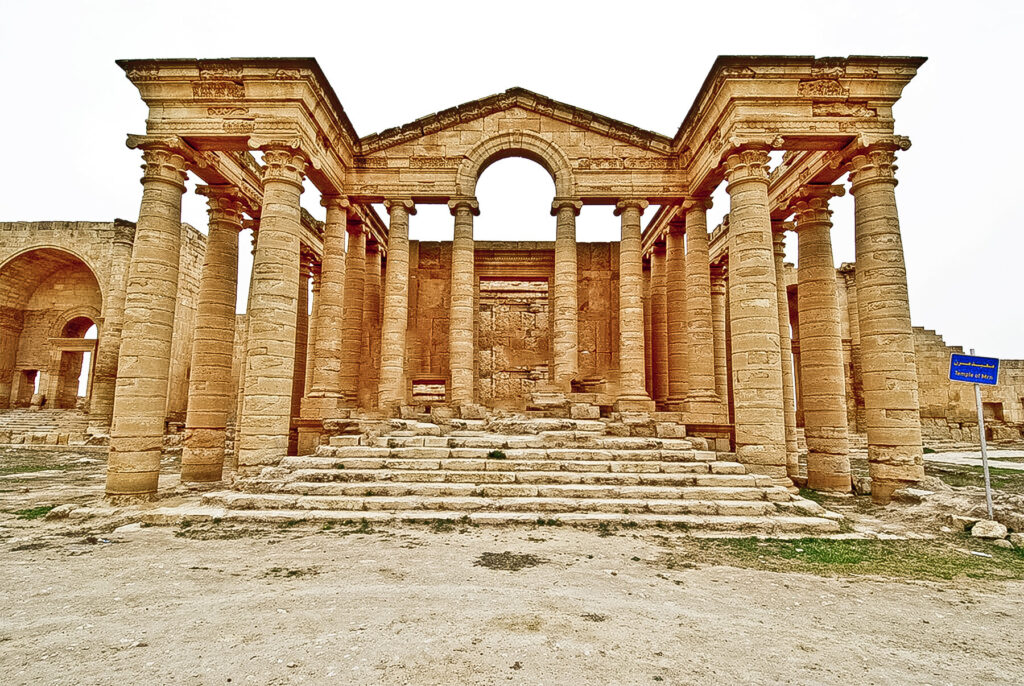
To the right of the southern entrance to the precinct are the remains of a temple dedicated to the goddess Shahiro; it consisted of an iwan flanked by chambers to the east and by a gallery to the west. In 1961 several statues of princes, high priests and other notables of the town were brought to light here. In the southern sector of the precinct are the remains of two other temples: the one on the south was probably dedicated to the goddess Allath.
In the northern sector of the precinct, opposite the northern entrance, are the ruins of a great iwan flanked by two smaller ones; this formed the main section of a temple not yet identified. The sanctuary, which lies next to it to the north, was probably consecrated to Mithras, whose cult spread throughout the whole Roman world from the 2nd century AD onwards.
Near the double gate giving access to the central precinct were discovered the important remains of a Hellenistic temple and several statues of Apollo, Poseidon, Eros and Hermes. Within the city ramparts, you can see the remains of several funeral towers and stone wells. Statues of princes, high priests and important figures in the history of Hatra were discovered on the site in 1961 and transferred to the Baghdad Museum.
Borsippa
These ruins were long considered to contain the ruins of the Tower of Babel, as Birs Nimrud is dominated by the mass of its ziggurat, a striking landmark which can be seen from miles afar.
In Babylonian times the Ezida was a temple as big as that of Marduk. It was built to the same design. The original date of the ziggurat is unclear but it underwent some restoration by Nebuchadnezzar II as cylinders bearing his name were discovered in the foundations.
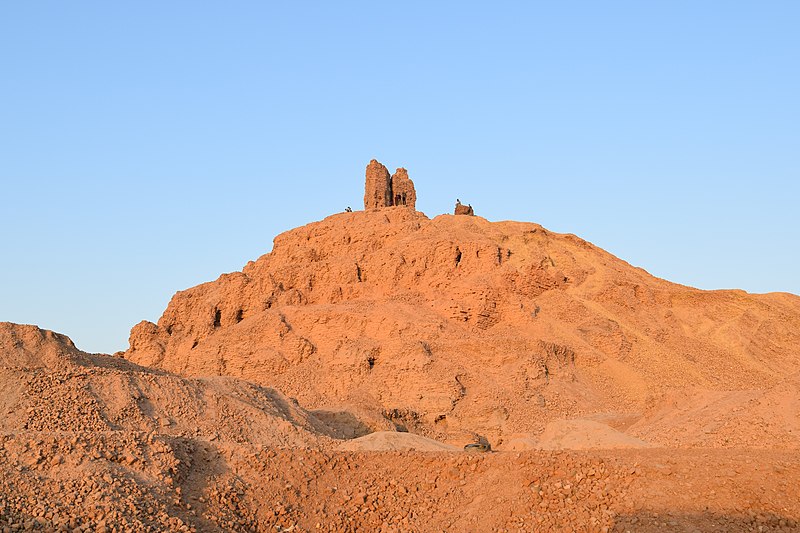
As you reach the site, the first great mound is that of a Sumerian palace or temple. We shall never really know because built on top is the mosque associated with the prophet Abraham and much visited by local people. The pictures taken at sunset looking across to the other great mound surmounted by the ziggurat and the temple area are spectacular.
Standing at about 46m high, the original ziggurat stood some 50m to the southwest of the temple. It measured around the base 45m by 61m. Its present appearance is that of a steep hill crowned by a great section of wall forming a tower built of baked bricks. To the southwest of the platform are great dark blocks of partially vitrified bricks, the result of some violent conflagration in the past. Viewed from the ziggurat, the walls surrounding the site are clearly easy to discern.
Ctesiphon
At the point where the land of the twin rivers narrows north of Babylon is one of the iconic architectural monuments of Iraq, the Arch of Ctesiphon. Although the Arch seems to have stood proudly aloof and majestic in its isolation for centuries, it is actually the remaining symbol of thousands of years of this region’s history.
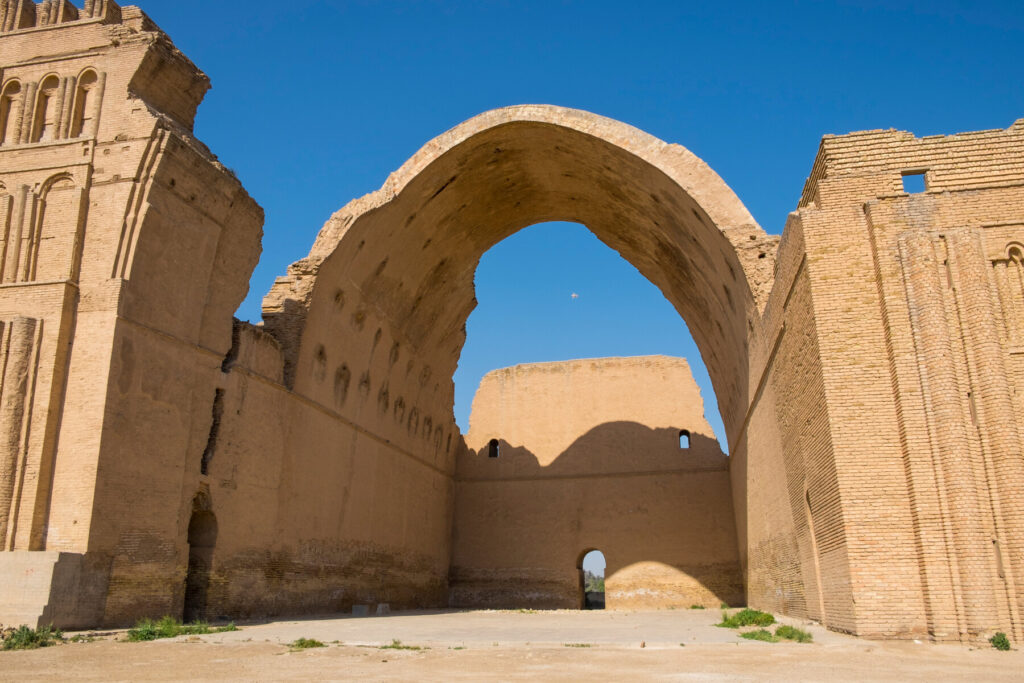
Here once stood the Arsacid capital of Ctesiphon, one of many ancient cities clinging to the Tigris River for their survival. Capricious, the river changed its course and so humans followed, leaving behind their palaces and their graves. Today, all that remains of this splendour are the ruins of the White Palace or Taq-i-Kisr, spanned by the Arch, proudly soaring 29m in height in a single span.
Towering over the entrance of a throne room which measured 25m by 43m, the whole of this vast chamber was once covered by a single flower- embroidered carpet known as ‘the Spring of Chosroes’. Built in the 3rd–4th century AD, it is the largest single-span brick arch in the world and one of the most beautiful and iconic ruins in the East. It has recently undergone another significant restoration.
More information
For more information, see our guide to Iraq:
